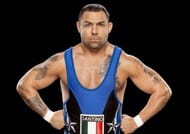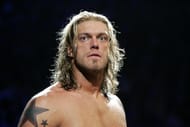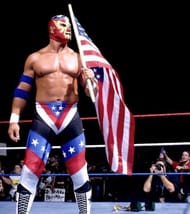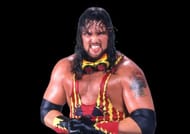
Wrestling is a dangerous sport. It requires focus, concentration, and dexterity to perform death-defying stunts so that the fans can get value for their money. The WWE wrestlers pursue their career since it gives them a huge fan following and lucrative salary/perks. This pushes them to wrestle with all their heart and soul.
When the stunts go wrong, wrestlers are left injured. There have been a few instances where WWE wrestlers had to retire early due to injuries to pursue other careers. Here is a list of five such WWE wrestlers.
Insane Vince McMahon ideas that got canceled - Watch Here!
#5 Santino Marella

Santino Marella was an Italian-Canadian professional wrestler, who wrestled in the independent circuit and fought in MMA before he was inducted in WWE. Marella was never a superstar in the WWE, but he provided a lot of entertainment with his comic acts and feminine characters. The Wrestling Observer Newsletter awarded his disguise "Santina Marella" as the best gimmick in 2007 and 2008.
Marella injured his neck twice, but his last fight with Rusev forced him to retire from wrestling. He became a judo and MMA trainer. Later, Marella was hired by Sportsnet 360 Aftermath as a TV analyst and panelist.
#4 Edge

Edge is a WWE legend with a total of 31 championship wins in his career. The Rated R Superstar was known for his daredevil acts and death-defying stunts. He was inducted into the 2012 Hall of Fame for his outstanding achievements in WWE. His career was marred with injuries, which led to a condition called cervical spinal stenosis. On the recommendation of doctors, he announced his retirement at the age of 37.
Nowadays, he acts in movies and TV productions like Bending the Rules, Interrogation, Private Eyes, Ghost Mine, and other productions. The Ultimate Opportunist also hosts a podcast with Christian.
#3 The Patriot

The Patriot wrestled in various promotions like AWA, WCW, and AJPW before he joined WWF. He carried the American flag and wore a mask which made his gimmick one of the best in WWF. True to his name, he wrestled with anti-American Hart Foundation and defeated Bret Hart.
The Patriot wrestled professionally for nine year before retiring in 2000 due to torn triceps. Later, he admitted cocaine and steroids use throughout his career. He moved to Columbia, South Carolina and started a new career as a car salesman for Dick Smith Nissan.
#2 Adam Bomb

Adam Bomb had a huge personality, and his gimmick projected a survivor of the Three Mile Island nuclear accident in Harrisburg, PA. Soon after his debut in WWF, The Nightstalker defeated Tito Santana, Virgil, and other wrestlers. He also had a short-lived rivalry with The Undertaker. Few experts believe Bomb was unlucky not to gain success in professional wrestling.
He retired in 2003 due to injuries sustained throughout his career. Later, Bomb started acting in Hollywood. He played the title character in the movie Axeman 2: Overkill which released in 2017.
#1 Christopher Nowinski

Christopher Nowinski is the youngest Hardcore Champion in the annals of WWE. Another unique aspect about him is that he graduated from Harvard University. He made his WWE debut in 2002, after fighting in independent circuit for a few years.
After wrestling for almost a year on the main roster, Nowinski wrestled his final match against Maven which he lost. The reason for his early retirement was that he suffered from a condition called post-concussion syndrome. He took to writing, and wrote his first book 'Head Games: Football's Concussion Crisis.' The book dealt with the perils of concussion in various contact sports like football, wrestling, and others.
Nowinski also co-founded the Concussion Legacy Foundation (CLF) in 2007 to bring awareness about head injuries in the wrestling community. CLF has performed deep research in partnership with the premier institutes like Boston University School of Medicine and Center for the Study of Traumatic Encephalopathy.
He also spears on TV and writes articles in newspapers due to which he is considered a non-medical expert in concussions. His serious work and efforts have motivated a lot of wrestlers to donate their brain for research after their death.
Make Sportskeeda your preferred choice for WWE content by clicking here: Source preferences

